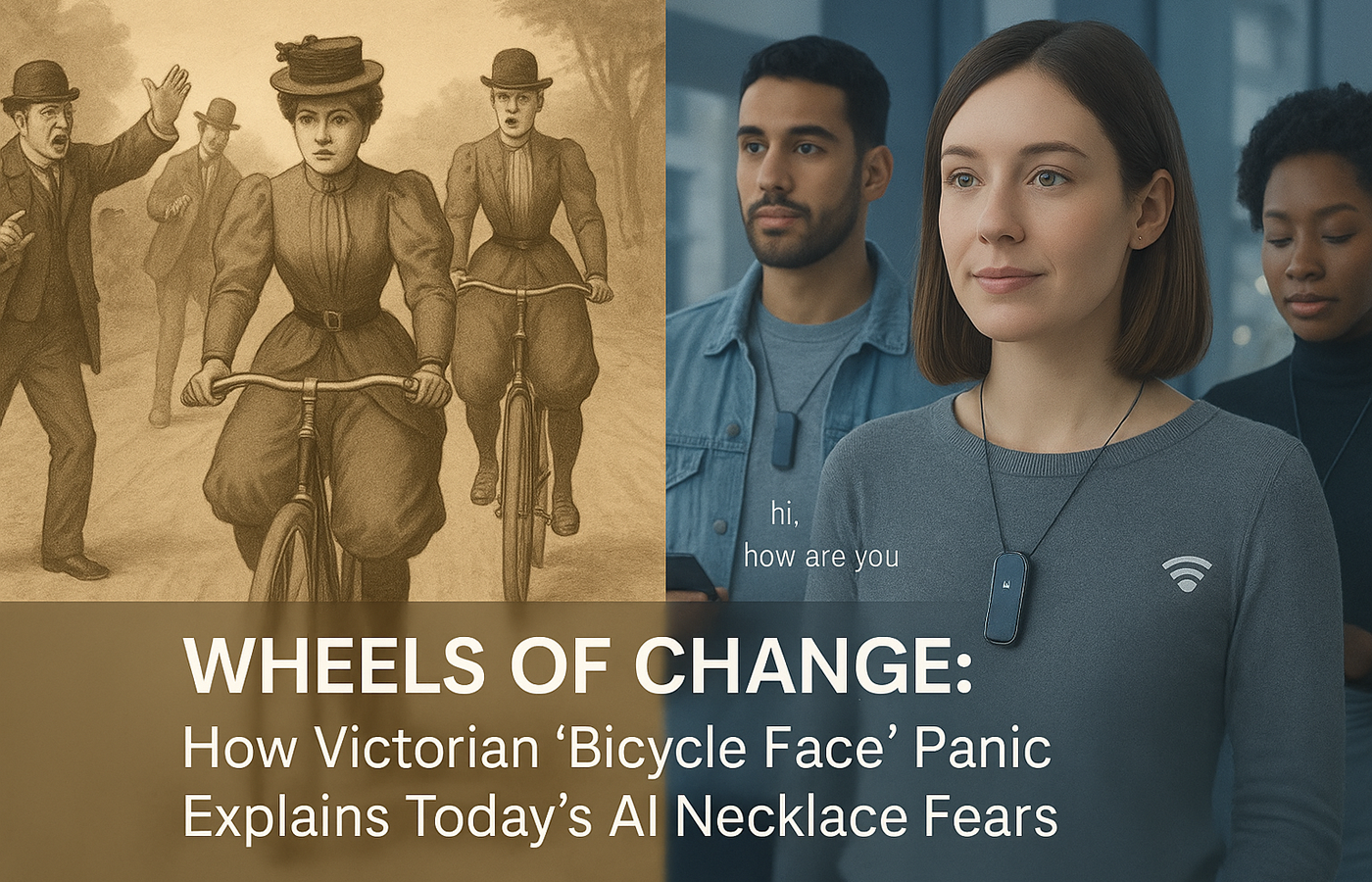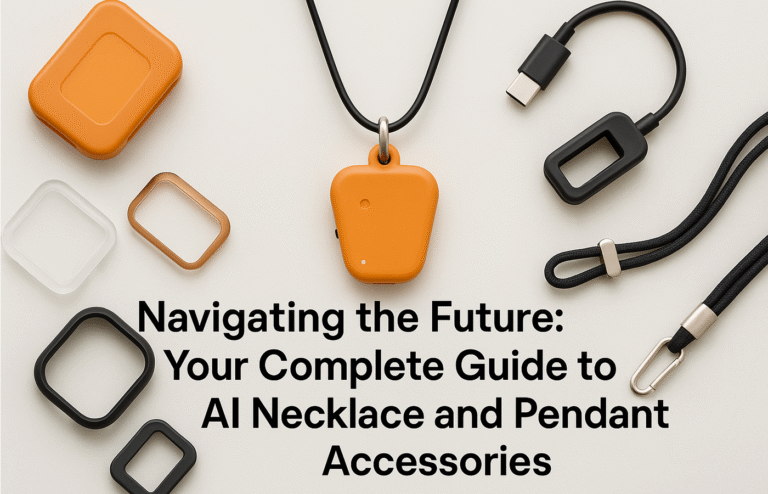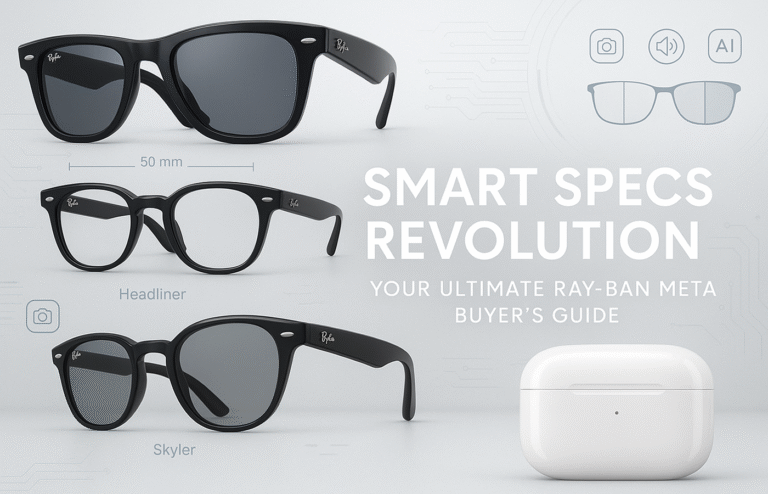From Bicycle Face to AI Anxiety: Historical Moral Panic Explains Wearable Technology Fears
Current anxiety about AI necklaces recording conversations mirrors Victorian Britain’s 1890s bicycle panic almost perfectly. Medical experts invented “bicycle face” syndrome, claiming cycling caused jaw clenching and bulging eyes in women, whilst predicting infertility and societal collapse.
Historical Pattern:
● Female cyclists faced physical attacks with stones and social ostracism
● Newspapers described cycling women as threats to moral decency
● Doctors warned of fabricated medical conditions and social corruption
Modern Parallel:
● AI necklaces face similar privacy invasion fears and surveillance concerns
● Critics predict social isolation and authentic conversation death
● Early adopters experience social awkwardness and “creepy” labelling
Market Reality:
Despite backlash, AI necklace market projects 40% growth to $80.99 billion by 2034. Enterprise adoption leads acceptance in healthcare and professional settings, suggesting gradual mainstream normalisation.
Wheels of Change: How Victorian ‘Bicycle Face’ Panic Explains Today’s AI Necklace Fears
If you’re feeling uneasy about AI necklaces that record conversations or smart pendants that listen to everything you say, you’re experiencing something remarkably familiar. History has a curious way of repeating itself, and the current anxiety surrounding wearable AI devices bears an uncanny resemblance to a moral panic that gripped Victorian Britain more than a century ago—when bicycles were considered a threat to civilisation itself.
In the 1890s, bicycles sparked massive public outrage that mirrors today’s concerns about AI necklaces almost perfectly. Critics warned of societal collapse, medical experts invented fictitious diseases, and early adopters faced physical attacks and social ostracism. Yet today, we encourage our children to ride bikes for exercise and promote cycling as wholesome family recreation. What changed? More importantly, what does this teach us about our current fears of wearable technology?
The Victorian Bicycle Hysteria
When the modern “safety bicycle” emerged in the 1890s—with its two equal-sized wheels and chain-drive system—it represented a revolutionary leap in personal mobility. For the first time in human history, ordinary people could travel distances independently, quickly, and affordably. However, this freedom came with a price that Victorian society wasn’t prepared to pay.
The backlash was swift and vicious, particularly when women began cycling. Medical “experts” warned of dire consequences, inventing conditions like “bicycle face”—supposedly characterised by “a hard, clenched jaw and bulging eyes” that would permanently disfigure female riders. Doctors claimed that cycling would cause uterine displacement, infertility, and complete physical exhaustion that would render women incapable of bearing children.
The social reaction was even more extreme. Female cyclists were physically attacked with bricks and stones as they rode through London streets. Newspapers described cycling women as “horror” and “offputting, uglier, meaner than a wench on a bike.” The moral establishment was convinced that bicycles would destroy the fabric of society by allowing women to travel without male supervision, potentially exposing them to “all sorts of temptation.”
Historical Perspective: The fears weren’t entirely irrational within the context of Victorian social structures. Bicycles genuinely challenged fundamental assumptions about women’s roles, mobility, and independence—threatening established power dynamics in ways that made traditional authority figures deeply uncomfortable.
The Pattern of Technological Moral Panic
The Victorian bicycle controversy reveals a clear pattern that emerges whenever transformative technology challenges existing social norms. This pattern includes several predictable stages:
Stage 1: Threat Identification The new technology is perceived as a fundamental threat to existing values and social order. In the 1890s, bicycles threatened Victorian gender roles and mobility restrictions. Today, AI necklaces threaten privacy expectations and social interaction norms.
Stage 2: Expert Amplification Respected authorities lend credibility to fears by providing “scientific” justification for concerns. Victorian doctors invented “bicycle face” syndrome; today’s critics warn of surveillance dystopias and the death of authentic human connection.
Stage 3: Media Sensationalisation Press coverage amplifies concerns through dramatic headlines and fear-mongering stories. Victorian newspapers ran regular features about cycling accidents and moral corruption; modern media focuses on “Orwellian surveillance” and “the end of privacy.”
Stage 4: Social Rejection Early adopters face ridicule, harassment, and exclusion from social spaces. Victorian female cyclists were attacked with stones; today’s AI necklace users report being called “creepy” and experiencing social awkwardness.
Stage 5: Gradual Normalisation As benefits become apparent and safeguards develop, society slowly adapts and eventually embraces the technology completely.
Today’s AI Necklace Controversy
The current backlash against AI necklaces follows this pattern precisely. Devices like the Limitless Pendant, Friend necklace, and Compass AI are facing intense scrutiny over privacy concerns, with critics warning of surveillance states and the death of authentic human interaction.
Common criticisms include:
- Privacy invasion: Fear that constant recording will eliminate trust and spontaneous conversation
- Social disruption: Concerns that always-listening devices will make people uncomfortable and paranoid
- Consent issues: Worries about recording others without explicit permission
- Data security: Fears about how recorded conversations might be stored, accessed, or misused
These concerns aren’t entirely unfounded—they represent legitimate questions about privacy, consent, and social norms that deserve serious consideration. However, the intensity of the reaction and the apocalyptic language often used suggests we’re experiencing a classic moral panic rather than a measured evaluation of risks and benefits.
Australian Market Reality: Local consumers are particularly privacy-conscious, making this an important consideration for Australian retailers and manufacturers entering the wearable AI space. Understanding these concerns is crucial for successful market positioning.
Why the Bicycle Parallel Matters
The bicycle example demonstrates several crucial insights about how society adapts to transformative technology:
Fears Were Based on Real Social Changes Victorian opposition to bicycles wasn’t entirely irrational—cycling genuinely disrupted established social hierarchies and gender roles. Similarly, AI necklaces do represent real changes to privacy norms and social interaction patterns. The difference lies in whether these changes are ultimately beneficial or harmful.
Benefits Eventually Outweigh Concerns Despite initial fears, bicycles provided undeniable advantages: improved health, efficient transportation, and personal freedom. These benefits eventually overshadowed social anxieties. AI necklaces offer similar genuine advantages: enhanced memory, accessibility support, health monitoring, and productivity improvements.
Technology Evolves to Address Concerns Early bicycles were genuinely dangerous and impractical for women in restrictive Victorian clothing. The technology evolved alongside social norms—bikes became safer, clothing became more practical, and society adapted. Similarly, AI necklace manufacturers are already implementing consent modes, encryption, and privacy safeguards to address legitimate concerns.
Generational Acceptance Those who grew up with bicycles as normal transportation didn’t share their parents’ fears. Today’s children, growing up with voice assistants and smart devices, may find AI necklaces as unremarkable as we find smartphone cameras.
The Real Lessons for Wearable AI
The bicycle parallel offers several important insights for understanding the trajectory of AI necklaces:
Innovation Timing Matters Bicycles succeeded when society was ready for the mobility and freedom they provided. AI necklaces are emerging at a time when people increasingly value health monitoring, productivity enhancement, and accessibility support—suggesting better timing than Victorian bicycles initially had.
Use Cases Drive Adoption Bicycles found acceptance first in practical applications (transportation, health) before becoming recreational. AI necklaces are likely to follow similar patterns, gaining acceptance first in professional settings (healthcare, business meetings) and specialised applications (accessibility, medical monitoring) before broader social adoption.
Privacy Solutions Emerge Just as cycling clothing evolved to address practical concerns while maintaining social acceptability, AI necklace technology is already evolving to address privacy issues through consent modes, encryption, and user control features.
Technology Evolution: The most successful wearable AI devices will likely be those that demonstrate clear value while providing robust privacy controls—much like how bicycle design evolved to become safer and more practical while addressing Victorian society’s legitimate concerns about women’s clothing and mobility.
Current Market Reality
The AI necklace market reflects this historical pattern perfectly. Despite current controversies, investment and development continue at pace. The global AI necklace market is projected to grow from USD 2.80 billion in 2024 to USD 80.99 billion by 2034—a 40% compound annual growth rate that suggests investors and manufacturers see past current social resistance to long-term potential.
Major technology companies are already integrating similar capabilities into existing devices. Fitbit is developing AI features powered by Google Gemini, while companies like Perfect Corp are acquiring virtual try-on specialists to enhance the digital accessory experience. This institutional investment suggests that the core technology will persist, even if current product formats evolve.
Enterprise Adoption Leading the Way Interestingly, AI necklaces are finding initial acceptance in controlled professional environments—much like how Google Glass found success in enterprise applications after consumer rejection. Healthcare workers, business professionals, and accessibility users represent early adopter segments where benefits clearly outweigh privacy concerns.
The Australian Context
For Australian consumers and businesses, the bicycle parallel offers particular relevance. Australia has traditionally been an early adopter of practical technology while maintaining strong privacy expectations. The success of wearable AI devices in the Australian market will likely depend on:
- Clear value propositions for health, productivity, or accessibility
- Robust privacy protections that exceed global standards
- Local support and compliance with Australian Consumer Law
- Cultural sensitivity to Australian social norms around personal space and privacy
Australian companies entering this space would be wise to study the bicycle precedent: focus on genuine utility, address legitimate concerns proactively, and allow social norms to evolve gradually rather than forcing adoption.
Looking Forward: Inevitable Evolution
The Victorian bicycle panic ultimately teaches us that useful technology finds a way to integrate into society, even when initial resistance seems insurmountable. The key factors determining success include:
Genuine Utility: Bicycles provided real benefits that people wanted—transportation, health, and freedom. AI necklaces must demonstrate similar clear value beyond novelty.
Addressing Legitimate Concerns: Victorian cycling evolved safer practices and appropriate clothing. AI necklaces must evolve better privacy controls and social etiquette.
Gradual Social Adaptation: Bicycle acceptance took decades, not years. AI necklace adoption will likely follow a similar timeline as society develops new norms around wearable recording devices.
Cultural Integration: Bicycles became symbols of freedom and health rather than moral corruption. AI necklaces may eventually be seen as tools for accessibility, health, and human enhancement rather than surveillance threats.
The Bottom Line
History suggests that today’s AI necklace anxiety may indeed be tomorrow’s nostalgic reminder of how we once feared beneficial technology. However, this doesn’t mean all concerns are unfounded or that adoption is inevitable. The bicycle parallel teaches us that successful technology integration requires both innovation and adaptation—from both technology developers and society itself.
For those sitting on the fence about AI necklaces, the Victorian bicycle example offers reassurance that humanity has successfully navigated similar technological disruptions before. We’ve moved from throwing stones at female cyclists to promoting bike-sharing programmes, from fearing “bicycle face” to celebrating cycling’s health benefits.
The question isn’t whether AI necklaces will face resistance—they already are. The question is whether they’ll provide enough genuine value to overcome that resistance, just as bicycles eventually did. Based on historical precedent, useful technology with clear benefits tends to find its place in society, regardless of initial moral panic.
Perhaps in thirty years, we’ll look back at today’s AI necklace fears with the same bemused perspective we now have toward Victorian “bicycle face” syndrome—wondering how we could have been so worried about technology that became an unremarkable part of daily life.








